Dear Steemit friends:
As part of my on-going project of cultural exchange, today i'm going to be introducing another Chinese Idiom. In my last post, we talked about the importance of placing emphasis on the right order and sequence of things with the idiom To put the cart before the horse. If you missed that one you can find it HERE.
Today's idiom also has valuable moral lessons we can learn from, so let's delve a little deeper and find out what's in store today.
 <;/center>
<;/center>
Today's Chinese Idiom story — Teaching fish to swim

This phrase is humorous because of it's irony. After all, teaching a fish how to swim is like teaching a person to breathe. However, the meaning of this idiom isn't about redundancy of teaching but actually about showing off a skill before an expert. In Chinese, it's also used to express modesty. A similar phrase in English would be "Showing broadsword before the Knight".
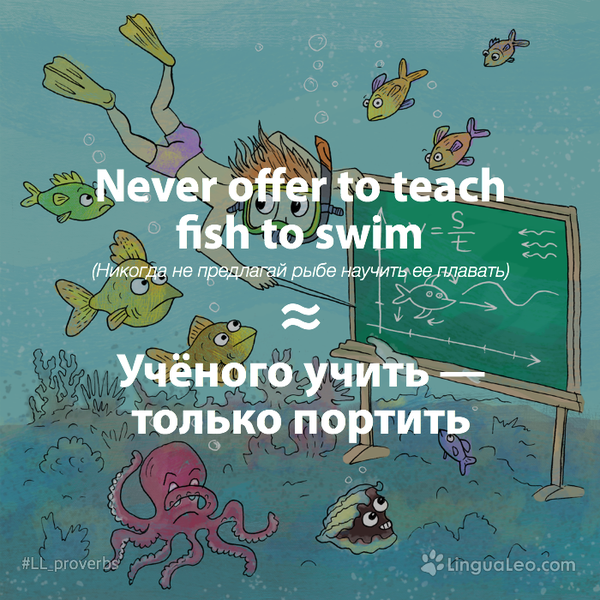
The idiom's classical story
This idiom originates from a classical Chinese story. During the Warring States period, there was a master carpenter known for making delicate wooden structures. His name was Lu Ban. People consider him the grandfather of Carpentry and a genius in his art. One day, a young carpenter came in front of a Red Door, and ushered his confidence in being able to create beautiful wooden pieces with his ax.
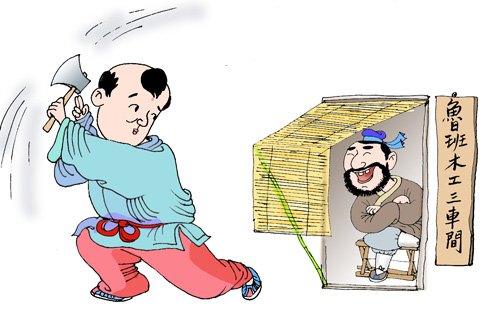
People asked this young carpenter if he would be able to make a door better than the Red Door behind him. His reply was : "I studied under the great Lu Ban, how could I not make such a simple door, what a joke!".
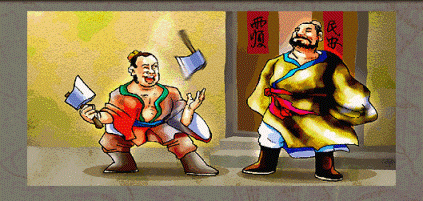
The people laughed at his reply, for the Red Door was actually made by the great Carpenter Lu Ban himself, and the Lu Ban lives in the house with the red door. The people asked the young carpenter, can you really make a door better than Lu Ban's door?
The young carpenter was so embarrassed that he immediately ran away!
In ancient times, people used this idiom to criticize people who are ignorant and enjoy showing off. In modern times, it is used to encourage people to express themselves, show their skill and challenge authority. Sometimes we encourage people to show their "carpentry in front of Lu Ban".

People in History who have dared to "Teach fish to swim"

When Isaac Newton was a relatively unknown scientist, he presented his research to the British Royal Institute in front of numerous scholars, many of which were well respected and highly reputable. He was laughed at and many considered his presentation to be like teaching fish how to swim. However, Newton was persistent and was not afraid of "teaching fish to swim". As history has revealed, Isaac Newton became one of the most influential scientists of all time for his scientific contributions.

My story
In my opinion, "Teaching a fish how to swim" in the world of food is never a bad thing.
The English style of Afternoon tea became popular around the Victorian times.
And this is the style of Afternoon Tea I've enjoyed whilst in London.

This is the afternoon tea I have in China
China has introduced English Afternoon Tea into some of their restaurants, however their arrangement differs somewhat from Afternoon Tea in London. Most notably, the scones are absent, instead taking their place are little dessert cakes. Apart from offering Chinese food, restaurants offering afternoon tea are teaching fish to swim. It's not authentic English Afternoon Tea, but it is a welcome addition to the menu giving people more choice.
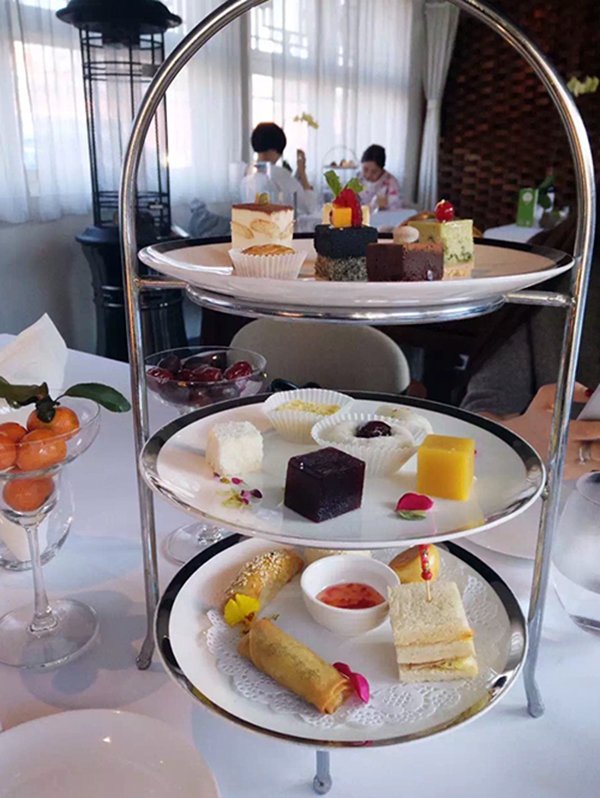
This Chinese café offers french fries and wrapped candy as well as some other Chinese desserts in their version of Afternoon Tea, I like to call it English Afternoon Tea with Chinese characteristics.
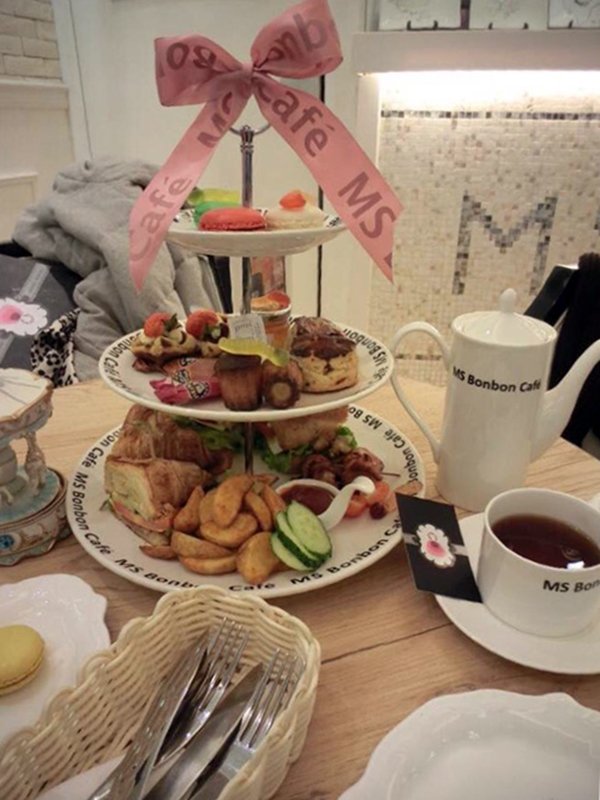
亲爱的Steemit朋友们,你们好,今天我很开心可以继续我成语故事系列,上一篇我们聊了*本末倒置*,你可以在这里找到 今天我想发掘更有意思的成语,Steemit的朋友跟我一起来看看吧^^
今天的成语——班门弄斧
看到这个题目,我猜你已经笑出了声,教鱼儿游泳,确实是一件可笑的事情。。这个成语比喻在行家面前卖弄本领。多数时候被用于自谦。这和俗语所说的“关公面前耍大刀”的意思差不多。
这个成语在中国的历史里,起源于一个故事——战国时代有个鲁国人名字叫鲁班。他精通制作精巧的器具,人们叫他“巧人”、木匠的始祖。有一天,一个年轻的木匠肆意走到大红门的房子前,炫耀他的斧头,把任何木头都能做出漂亮的东西。旁人听,就指着他身后的大红门,问他能否做出比这扇还好的门。年轻的木匠傲慢地说 :“我曾经当过鲁班的学生,难道还做不出这样一扇简单的大门来,简直是笑话。”众人大笑起来。。说:“这就是鲁班先生的家,这扇就是他亲手做的,你真的能做出比这扇还好的门吗?”那位年轻的木匠不好意思地跑掉了。
我觉得古代多用“班门弄斧”批评那种无知却又喜欢炫耀的人,而现在这个成语多用于鼓励人们大胆地表现自我,展示自己的本领,挑战权威,有时会说“弄斧必须到班门”。
历史上敢于班门弄斧的人
牛顿还是个小人物的时候,他跑到英国皇家学院,在众多学者面前宣布他的研究成果。然而,牛顿得到的却是讥笑,那些学者认为牛顿是在班门弄斧。可历史事实告诉我们,正是这个“班门弄斧”的人成了科学巨匠。
我的故事
我觉得在吃的世界,班门弄斧绝对是个好事情。
下午茶发展自英国维多利亚时代的英式下午茶。
英式下午茶的标配是三层瓷盘装盛的点心。从下到上,第一层放三明治,第二层放Scone,第三层放蛋糕和水果塔。
在中国的许多餐厅,近几年也把英式下午茶搬进了餐厅,但是摆盘却很伦敦的很不一样,没有Scone, 而是小蛋糕。中国人喜欢吃小蛋糕。虽然中国餐厅除了提供中餐,还弄一些下午茶,有些班门弄斧,但是毕竟丰富了中国人的午后休闲活动,确实是有益无害的。
If you are interested in my other blogs related to "Chinese Culture" please check out these other blogs below^^
Taking Steemit to one of the 8th wonders of the world^ ^
Impressions of China--Taking Steemians back to the Tang Dynasty.
Capturing the Spirit of the Uyghurs through Ink Wash Painting.
A thousand years ago, I was an Empress!
Welcome to my world of Idioms #1.
Welcome to my world of Idioms #2 .

